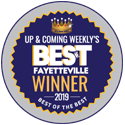Name that Rash: A Guide to Identifying Rashes in Kids
Bumpy, scaly, red, inflamed rashes can be scary, especially when they appear on our kids. There are many different rashes a child can develop and it can be challenging to differentiate between them. Knowing how to identify and appropriately treat a rash is important knowledge for parents to have. It is even more important to know when to seek medical advice from a pediatrician. Here are some of the most common skin rashes found in children.
Roseola
Also called Sixth disease, roseola typically appears in children under age three. This rash most commonly appears after a high fever resolves. There are often no other symptoms during the time of the fever besides perhaps a mild cough, diarrhea and/or a runny nose. The child is otherwise healthy while the rash is present. Treatment is unnecessary and the rash will resolve on its own within a couple of days.
Scarlet Fever
After a bout of strep throat, scarlet fever appears in approximately 10% of children. Most children have a fever and sore throat one to two days prior to the rash appearing. The rash looks similar to a sunburn with sandpaper-like bumps. It spreads to all areas of the body except the palms and soles of the feet. Scarlet fever can last several weeks. The rash itself is not contagious assuming the cause (strep throat) has resolved.
 Molluscum Contagiosum
Molluscum Contagiosum
Caused by the poxvirus, this highly contagious skin infection typically affects children between the ages of 2-11. It can also occur in sexually active adolescents. The rash appears as small, flesh colored bumps or papules with an indentation in the center. The bumps usually appear in groups of 10-20, but some people have more. The rash may be diagnosed by a pediatric provider and can last anywhere from a few months to several years.
 Eczema
Eczema
Eczema appears as dry, scaly patches on the skin. It is most common in children but some continue to have eczema as an adult. Children with eczema frequently have other “atopic” illnesses like allergies or asthma. However, asthma isn’t usually a cause of eczema. On the other hand, allergies can lead to eczema. Treatment for eczema typically includes moisturizing lotions, steroid creams or antihistamines. Treatment may also include allergy testing to find the cause and then immunotherapy to build immunity to the allergen(s).
 Tinea
Tinea
Often referred to as ringworm, Tinea is a fungal infection that can appear anywhere on the body including the scalp. The most common skin infection in children, Tinea is known for its trademark ring shape. It is typically treated with topical antifungal treatments such as Lamasil.
Fifth Disease
Famous for its slapped cheek appearance when it first appears, it typically then spreads to the rest of the body. There are usually no symptoms outside of a possible cold; however, it is spread through mucus and saliva. It is not typically itchy and treatment is unnecessary. However, the rash can last a couple weeks.
 Impetigo
Impetigo
A highly contagious bacterial infection, impetigo appears as clusters of bumps that can ooze and form a yellowish crust. It can easily spread to other areas of the body and other people by clothing, towels, and fingers. Antibiotics are typically prescribed to stop the spread of the infection.
Rashes are common in children, however, treatment often depends on if it is contagious and the amount of discomfort the child is experiencing. If you are ever concerned about your child’s rash, schedule an appointment with one of our pediatric providers. We are here to help your children feel better, faster.








